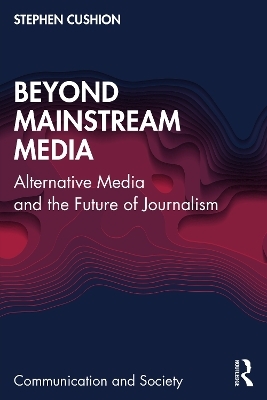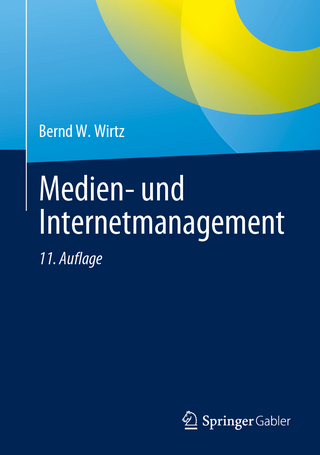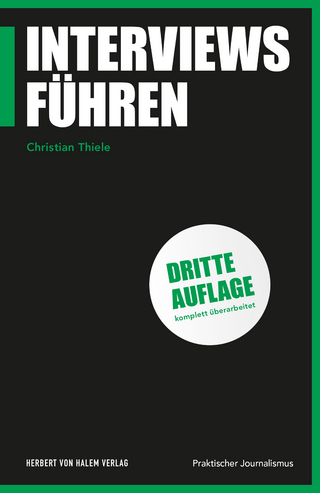
Beyond Mainstream Media
Routledge (Verlag)
978-1-032-42026-4 (ISBN)
Considering the differences in agenda between alternative and mainstream media coverage, Cushion sheds light on why right-wing alternative media have become a more prominent part of national media systems than left-wing sites in the Western World. In doing so, he argues that alternative left-wing media should place less emphasis on attacking professional journalism and focus more on converging into the world of mainstream news to promote their politics. This book draws on over 3,500 articles and 17,000 social media posts produced by alternative media, extensive interviews with editors and contributors, and a survey of over 2,700 media users. It develops a comparative international perspective by explaining how findings and concepts can be applied to understanding much broader issues, such as public distrust in the mainstream media or the influence different media and political systems have on the production of alternative media.
Providing both an introduction to and a critical analysis of the state of alternative media today, this book is written in clear, jargon-free language and is recommended reading for advanced students undertaking courses in Alternative Media and Political Journalism.
Stephen Cushion is Professor at the School of Journalism, Media and Culture, Cardiff University, UK.
Introduction
The rise of new left-wing and right-wing alternative media
Studying alternative media and their wider influence
The scope of the book
Chapter by chapter outline
Chapter One
Researching the boundaries of alternative and mainstream media
Conceptualising alternative media: towards a more inclusive understanding?
Researching alternative media: Towards an international agenda
Content: developing left-right comparative and longitudinal analysis of online and social media output
Production: from single case studies of activism to comparative analysis of alternative media
Audiences: identifying alternative media users and understanding their relationship to mainstream media
Conclusion: towards a holistic understanding of alternative media
Chapter Two
The evolution and influence of alternative media in national media and political systems
Interpreting the characteristics of new alternative online political media
Understanding the editorial character of UK alternative media
Continuities and changes in alternative media (2020-2021)
Understanding alternative media: reflecting and responding to changes in national media and political systems
Chapter Three
How alternative online political media use social media
The use of social media in alternative and mainstream media
UK comparative study of Twitter use in right-wing and left-wing sites (2015-2018)
How the changing political environment reshapes social media content (2020-2021)
Editorial differences, but a mainstreaming of social media use in alternative media
Chapter Four
Attacking mainstream media: the role media systems play in shaping how professional journalism is critiqued
The portrayal of mainstream media in alternative media: a cross-national perspective
The (changing) editorial focus on mainstream media and professional journalism
Six ways alternative media de-legitimize mainstream media
Why media systems shape alternative media criticism of professional journalism
Chapter Five
The professionalisation of alternative political media production
Interpreting the hybridity of alternative media production
Production processes of alternative media
Organizational structures
Organizational practices
Editorial functions
Professionalization
Beyond activism: The professionalization of alternative media
Chapter Six
The influence of mainstream media on alternative media production
Interpreting the continuum between mainstream and alternative media
The relationship between alternative media and mainstream media production
Political journalism
Editorial coverage and agenda
Media correctives
The importance of social media
Developing professional production practices to challenge mainstream media power
Chapter Seven
Who uses alternative media and why?
Identifying and characterising alternative media users
To what extent have people heard or accessed alternative media sites?
Where and why do people use alternative media?
What issues and topics matter to alternative media users?
Interpreting the complexity and fluidity of alternative media users
Chapter Eight
The attitudes of alternative media users towards mainstream media
The relationship between mainstream and alternative media
The political orientation of alternative media users and their engagement with mainstream media
Alternative media users’ attitudes to mainstream journalism and journalists
Alternative media users’ attitudes towards BBC News and the BBC generally
Beyond echo chambers and filter bubbles: towards a sceptical media savvy user
Chapter Nine
Alternative media and the future of journalism
De-Westernising alternative media studies: understanding differences in cross-national media and political environments
De-centring alternative media studies: Why the US’s media and political system is exceptional compared to other Western nations
The relationship between alternative media use and disaffection with mainstream media
The rise of right-wing alternative media and their opposition to mainstream media
The future of journalism? The role of alternative left-wing media and their ideological influence
Index
| Erscheinungsdatum | 28.09.2023 |
|---|---|
| Reihe/Serie | Communication and Society |
| Zusatzinfo | 31 Tables, black and white |
| Verlagsort | London |
| Sprache | englisch |
| Maße | 156 x 234 mm |
| Gewicht | 320 g |
| Themenwelt | Geisteswissenschaften ► Geschichte |
| Sozialwissenschaften ► Kommunikation / Medien ► Journalistik | |
| Sozialwissenschaften ► Kommunikation / Medien ► Medienwissenschaft | |
| ISBN-10 | 1-032-42026-X / 103242026X |
| ISBN-13 | 978-1-032-42026-4 / 9781032420264 |
| Zustand | Neuware |
| Haben Sie eine Frage zum Produkt? |
aus dem Bereich


